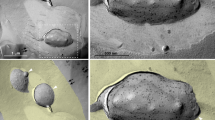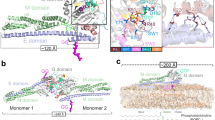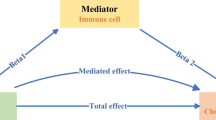Abstract
Membrane rafts are highly dynamic heterogeneous sterol- and sphingolipid-rich micro-domains on cell surfaces. They are generally believed to provide residency for cell surface molecules (e.g., adhesion and signaling molecules) and scaffolding to facilitate the functions of these molecules such as membrane trafficking, receptor transport, cell signaling, and endocytosis.The governing, or overall hypothesis, for this project is that membrane rafts provide residency for Fc[gamma]RIIA (CD32A) on K562 cells, and that by doing so they provide a platform from which Fc[gamma]RIIA initiate or carry out their functions, which include migration, signaling, phagocytic synapse formation, and internalization of IgG opsonized targets.Using immuno-fluorescent laser scanning confocal microscopy and reflection interference microscopy (RIM), we studied the spatial and temporal distributions of membrane rafts and surface receptors, signaling molecules, and cell organelles during the formation of phagocytic contact areas. K562 cells, which naturally express CD32A, a cell surface receptor for the Fc portion of Immuno-globulin G(IgG), was chosen as a model for neutrophils. An opsonized target was modeled using a glass supported lipid bilayer reconstituted with IgG. CD32A was found to cluster and co-localize with membrane rafts. Placing the K562 cells on the lipid bilayer triggered a process of contact area formation that includes binding between receptors and ligands, their recruitment to the contact area, a concurrent membrane raft movement to and concentration in the contact area, and transport of CD32A, IgG, and membrane rafts to the Golgi complex. Characterization of these processes was performed using agents known to disrupt detergent resistant membranes (DRMs), dissolve actin microfilaments, and inhibit myosin motor activity, which abolished the CD32A clusters and prevented the contact area formation. The relevance to phagocytosis of contact area formation between K562 cells and lipid bilayers was demonstrated using micro-beads coated with a lipid bilayer reconstituted with IgG as the opsonized target instead of the glass supported planar lipid bilayer. Disruption of membrane rafts, salvation of the actin cytoskeleton, and inhibition of myosin II activity were found to inhibit phagocytosis.These data suggest membrane rafts play several important roles in CD32A mediated phagocytosis including pre-clustering CD32A, transport of CD32A to the phagocytic cup, and transport of the opsonized target towards the Golgi complex. Here we have provided evidence that membrane rafts serve as platforms which are used to cluster CD32A and transport CD32A along the actin cytoskeleton to the site of phagocytic synapse formation thus allowing for the quick assembly of a phagocytic synapse.
Similar content being viewed by others
Article PDF
Author information
Authors and Affiliations
Corresponding author
Rights and permissions
About this article
Cite this article
Tolentino, T., Selvaraj, P. & Zhu, C. The Roles of Membrane Rafts in CD32A-Mediated Phagocytosis. Nat Prec (2007). https://doi.org/10.1038/npre.2007.1191.1
Received:
Accepted:
Published:
DOI: https://doi.org/10.1038/npre.2007.1191.1



